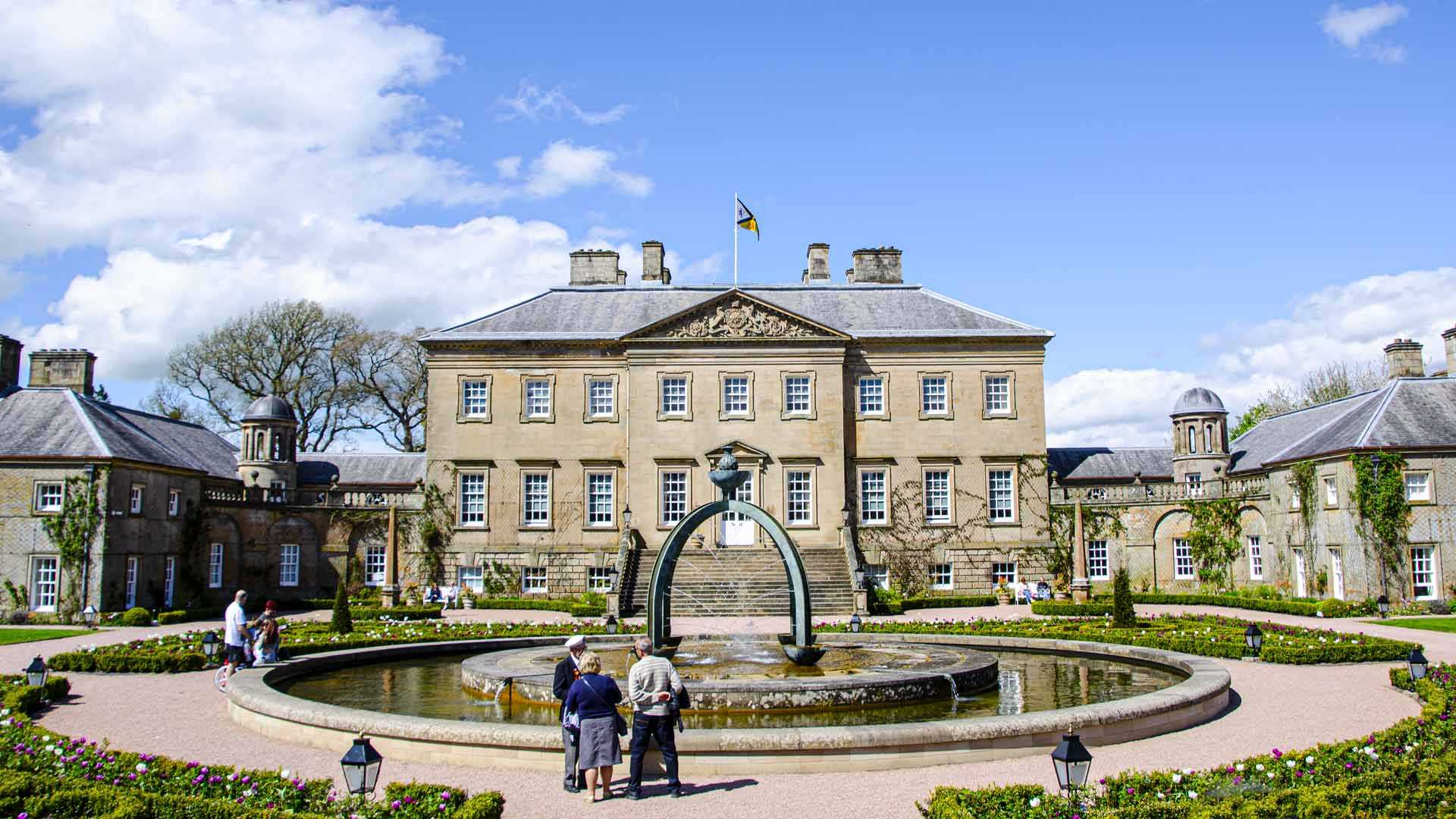
Festival Plus+
Festival Fringe Events
Bill Paterson reads excerpts from James Boswell's books and journals
The much-loved Scottish actor, known to many through his recent roles in Shetland, Fleabag, Guilt and Rebecca as well as through his narration of numerous TV and radio programmes including being the voice of BBC 1's ‘The Repair Shop' and the reading of his own classic childhood memoir Tales from the Back Green, will be reading excerpts from James Boswell's most enduring books and journals, including An Account of Corsica and Tour to the Hebrides – which was recently the inspiration behind the Sky Arts programmes with Frank Skinner and Denise Mina.
While The Life of Samuel Johnson has never been out of print since its publication in 1791, Boswell's numerous other writings have been less accessible to the reading public. Yale University, where the Boswell archive is held, have been engaged in a monumental campaign to publish the complete Boswell papers and one of their greatest triumphs was the publication in 1950 of Boswell's youthful London Journal 1762-1763 which became an international bestseller.
Visit jamesboswell.scot to find out more about Boswell and his writing.
Dr Gordon Turnbull and The Life of Boswell
The great biographer and diarist James Boswell lies in his eternal resting place, with his immediate family members, in the ancestral tomb at Auchinleck. Surrounding him in the graveyard lie many of the Ayrshire folk of his time, immortalised by mention in his marvellous diaries and letters.
Gordon Turnbull, head of the Yale Boswell Editions, notes that in this very special place, we remember not only life, but the Life — Boswell’s Life of Samuel Johnson, the pathbreaking biographical achievement that issued from the deepest Boswellian impulse — to remember and to commemorate.
Scottish Portrait Painting after the Reformation
James Knox, director of the Fleming Collection and James Holloway, previously director of the Scottish National Portrait Gallery, consider two seventeenth century portraits of Scotland's greatest heroes, William Wallace and Robert the Bruce by the artist George Jamesone, the first Scottish-born artist to emerge after the cultural wreckage of the Reformation.
Painted in 1633 for a triumphal arch erected on Edinburgh's ancient High Street to celebrate Charles I's Scottish coronation, can two 'imagined' historical portraits summon up of the characters of heroes, long dead?
Henry Raeburn - a Portrait of the Enlightenment
When James Holloway, director of the Scottish National Portrait Gallery, heard about a previously unknown portrait by Henry Raeburn for sale at an unlikely auction house in London, he was intrigued. The subject was the architect, James Gillespie Graham, responsible for some of the grandest classical architecture Edinburgh's New Town. His interest became acute when the picture went unsold.
James tells what happened next – and why the portrait sums up Raeburn's technical brilliance as an artist capturing glimpses into the sitter's personality across moments in time.
Pioneer Scottish Women Artists
James Knox, director of the Fleming Collection, explores the careers of two pioneering Scottish women artists. The first is Phoebe Anna Traquair, who in the 1880s and 1890s, became one of the leaders of the Celtic Revival in Scotland, as well as one of Edinburgh's most prominent artists, spanning mural painting, design and applied arts.
The second is Dorothy Johnstone, who at 22 was teaching at Edinburgh Art School and by the end of WW1 emerged as one of Scotland's most dynamic artists. But whereas Traquair met with life-long success, Johnstone's career petered out in the 1920s. Discover what went wrong.
David Eustace on Photography as Portraiture
At sixteen David Eustace was a naval rating on a mine sweeper in the North Sea, next he served as a prison officer at Barlinnie gaol. Discover how he went on to become one of the most renowned portrait photographers in the UK and America, numbering as his subjects Sophia Loren, Paul McCartney and dandy artist, John Byrne.
David's story, as told to the Boswell Book Festival, is a profound and moving self-portrait that examines the nature of his art, celebrity and the scope of photography as a medium of portraiture.

![Sponsor Logo [object Object]](https://images.prismic.io/boswell-book-festival/ZfGAMUmNsf2sHikd_TKCF_LOGOS_PRIMARYPOSITIVE.png?auto=format%2Ccompress&rect=0%2C0%2C10267%2C7000&w=352&h=240&fit=max)
![Sponsor Logo [object Object]](https://images.prismic.io/boswell-book-festival/c815aa23-36be-40d4-bb53-6e1b278ccffc_Creative-Scotland.png?auto=compress%2Cformat&rect=0%2C0%2C352%2C240&w=352&h=240&fit=max)
![Sponsor Logo [object Object]](https://images.prismic.io/boswell-book-festival/0cb94f40-bfbd-4c9e-814e-784885208d06_East-Ayrshire-Council.png?auto=compress%2Cformat&rect=0%2C0%2C352%2C240&w=352&h=240&fit=max)
![Sponsor Logo [object Object]](https://boswell-book-festival.cdn.prismic.io/boswell-book-festival/Z78HZJ7c43Q3gQOT_foyle-foundation-vector-logo.svg?fit=max&w=352&h=240)
![Sponsor Logo [object Object]](https://images.prismic.io/boswell-book-festival/9fcd60d0-5d17-49e2-b430-44d141435b6c_Hillhouse-Group.png?auto=compress%2Cformat&rect=0%2C0%2C352%2C240&w=352&h=240&fit=max)
![Sponsor Logo [object Object]](https://images.prismic.io/boswell-book-festival/328fcac7-1930-4a58-ad66-797923067545_Scottish-Friendly.png?auto=compress%2Cformat&rect=0%2C0%2C352%2C240&w=352&h=240&fit=max)
![Sponsor Logo [object Object]](https://boswell-book-festival.cdn.prismic.io/boswell-book-festival/ZeoSTnUurf2G3M0D_KingsFoundationDumfriesHouseGrey.svg?rect=330%2C0%2C377%2C257&w=352&h=240&fit=max)